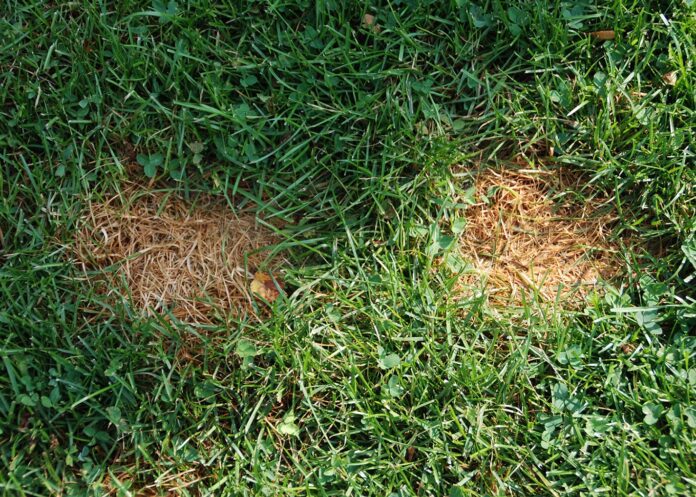
The extreme heat and drought of 2021 across much of the country has turned many lawns brown. Damaged lawns may be thin, contain dead patches or are overrun with weeds.
Fall is a good time to improve the health and appearance of a weather-worn lawn. Start the process by evaluating the damage. Then plan a course of action and be prepared to follow through as needed with proper care.
Fall fertilization can help improve thin lawns and those with numerous small dead patches the size of a baseball or smaller. Apply fertilizer in early September to help lawns recover from summer stress while encouraging denser growth and deeper, more drought tolerant roots. Those in warmer climates growing grasses like centipede, Bermuda and zoysia should make sure the last fall application is at least one month prior to the average first killing frost. Use a low nitrogen, slow-release fertilizer that won’t harm stressed lawns and young seedlings if repairing or overseeding the lawn.
Continue to mow high as long as the grass continues to grow. Taller grass produces deeper, more drought tolerant roots. Mow often, removing only a third of the total height. This is less stressful on the lawn and results in shorter clippings that can be left on the lawn. The clippings return moisture, nutrients, and organic matter to the soil.
Use a sharp blade for a cleaner cut that closes more quickly, reducing water consumption and risk of insects and disease while leaving the lawn looking its best. You’ll also save time as sharp blades cut more efficiently and reduce fuel consumption by as much as 22%.
Improving a lawn’s growing conditions will help it recover more quickly and equip it to better manage environmental stress. Core aerate lawns that have more than one half an inch of thatch, those growing in compacted soils, or before overseeding. By removing plugs of soil, you will break through the thatch and create channels for water and fertilizer to reach the grass roots. For best results, core aerate the lawn when it’s actively growing; fall for cool season grasses and spring or early summer for warm season grasses.
Hand removal of weeds is the most environmentally friendly option. Organic broadleaf weedkillers with the active ingredient Fehedta or Hedta is another option. Spot treat problem areas to minimize the use of chemicals and reduce the stress on already stressed lawns. As always, read and follow label directions carefully whether using traditional, natural or organic chemicals.
Repair dead and bare patches in cool season lawns that are the size of a soccer ball or larger as needed. Those growing warm season grasses will have the best results when seeding in spring through early summer. Rake away dead grass and debris roughening and exposing the soil below. Spread grass seed over the area and lightly rake to ensure seed-to-soil contact. Or mix a handful of grass seed in a bucket of compost or potting mix. The organic matter helps conserve moisture and promotes seed sprouting. Spread the mix over the soil surface. Water these areas often enough to keep the soil surface moist until the grass seed sprouts. As grass begins to grow, water more deeply and less often to encourage a robust drought tolerant root system.
Proper maintenance and a bit of cooperation from nature will help transform your lawn from a disappointment to an asset in your landscape.














